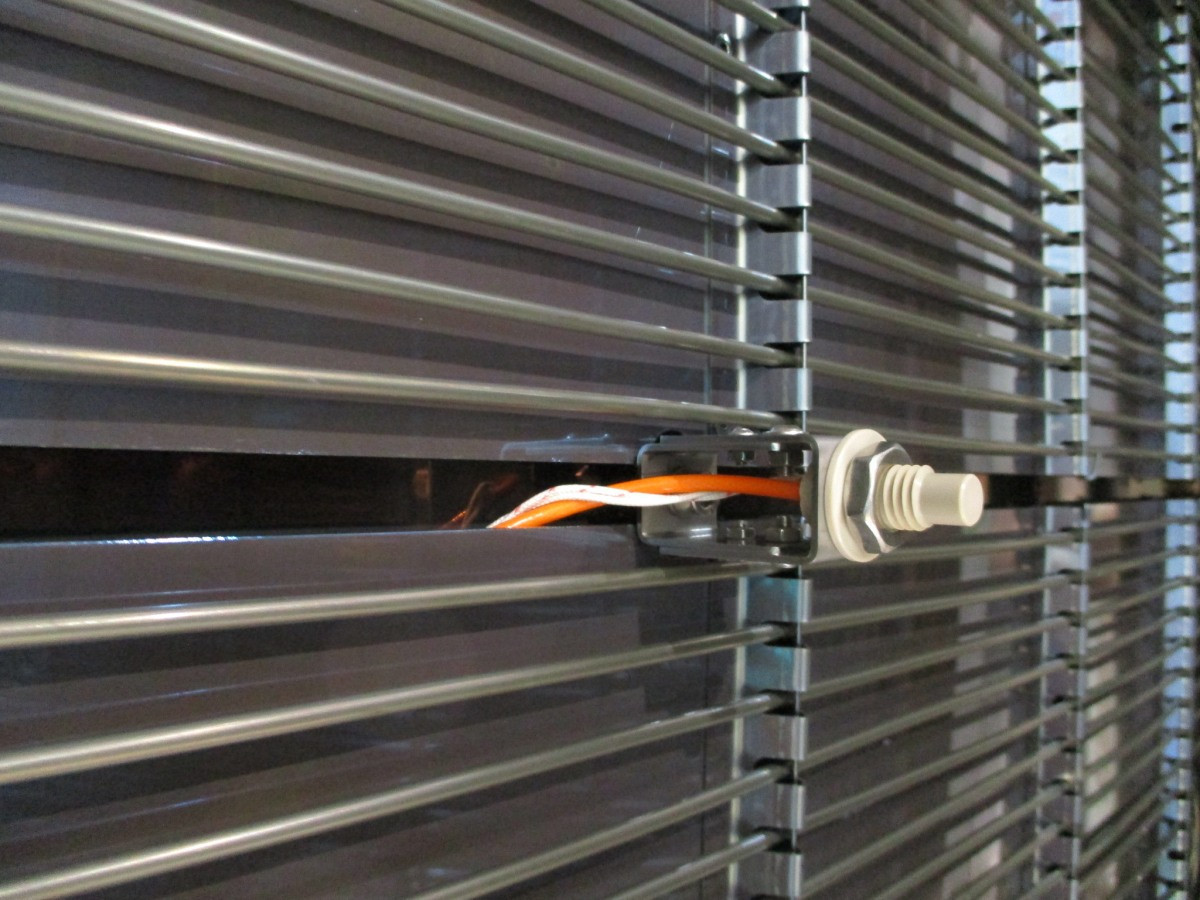In cooperation with the medium-sized company Suragus, which specializes in non-destructive material testing using high-frequency eddy current sensors, the Fraunhofer Institute for Organic Electronics, Electron Beam and Plasma Technology FEP has succeeded in carrying out contactless in-situ measurements under high-vacuum conditions at temperatures of up to 220 °C. The method can be used to measure coating resistance, conductivity or metal coating thickness directly after hot coating deposition or coating modification processes.
With this method, measurements of the sheet resistance, conductivity or metal layer thickness can be carried out directly after hot layer deposition or layer modification processes using non-contact high-frequency eddy current measurement. The foundations were also laid for process characterization in the 450 to 600 °C range. The work is part of the 'HotSense' project funded by the Saxon State Ministry of Economics, Labor and Transport.
In-situ measurement of the sheet resistance
Thin, functional conductive layers with precisely tailored properties are used in many applications. These include switchable or energy-efficient window glass, various types of solar cells, batteries, semiconductor chips and touchscreens. With their special properties, the very thin functional layers contribute significantly to the functionality, service life and performance of the respective application. The coating processes for depositing these thin layers usually take place in a high vacuum and at high temperatures. Subsequent annealing processes for the targeted adjustment of coating and/or substrate properties also take place at several hundred degrees Celsius. A key property of the thin layers is the sheet resistance. Its direct measurement is used for process control and stabilization.
In order to ensure high quality and functionality of the coatings, it is necessary to characterize and monitor the process steps in-situ, i.e. during the coating processes. Especially in vacuum processes, compatible real-time measurements - such as those of the sheet resistance - are a challenge, but necessary in order to produce contamination-free coatings with reproducible properties. Previous measurement methods for contactless electrical in-situ characterization of such vacuum coatings only work up to a temperature of 65 °C, which prevents efficient system operation through in-process measurement and process control. This limit has now been significantly extended. In-situ coating characterization can now be carried out directly in the high-temperature process or close to the process and without contact.
Investigations and measurement setup
The two project partners investigated measurement methods for the non-contact in-situ characterization of the electrical resistance of thin films under high vacuum and high temperature requirements. After two years of development, the researchers have succeeded in developing a measurement method that delivers reliable results at temperatures of up to 220 °C, making it possible to characterize coatings even during the process at such high temperatures. The sheet resistance must also be measured under vacuum, as this is the only condition under which the layers are neither contaminated nor oxidized.
The researchers have developed a measurement setup under application-oriented conditions and carried out tests at different temperatures. A correlation between temperature and measurement signal can be derived from the results. Suragus has developed an algorithm from this.
As part of the project, the sensor head for the characterization was redesigned and, with a size of approx. 12 × 40 mm², was made significantly smaller than before, opening up further fields of application in applications with limited installation space.
The entire measurement setup was tested and developed at the Fraunhofer FEP on the ILA 900 in-line sputtering system for coating flat substrates under clean room conditions. As a result, the new measuring set-up could be examined and characterized on a pilot scale. Metrological investigations were carried out on drift, signal strength, external sources of interference and the behavior of the sensor, sample and temperature in relation to each other. The resistance measurement range extends over three decades and has a reproducibility of < 2 %. The solution envisaged here will cover five measurement decades from 0.001 to 100 ohms per square, which covers a thickness measurement range from a few nanometers to a few micrometers.
 Newly developed measuring setup with sensor measuring head for in-situ characterization of coating processes at high process temperatures
Newly developed measuring setup with sensor measuring head for in-situ characterization of coating processes at high process temperatures
Advantages for users and outlook
With the new non-contact measuring method for monitoring heated coating or tempering processes, process control, coating quality and operating costs of systems can be optimized. Measurements in other applications and system types are also possible.
Suragus aims to launch the first commercial systems on the market by the end of 2023. Both project partners are aiming to further develop the existing technology to enable measurement at even higher temperatures and are also open to customer-specific investigations, according to their own statements.


